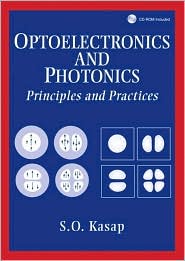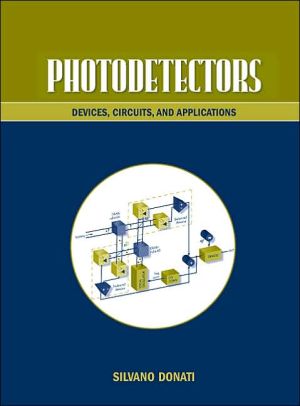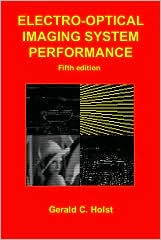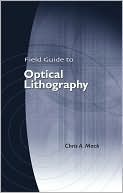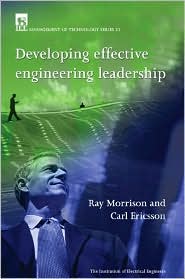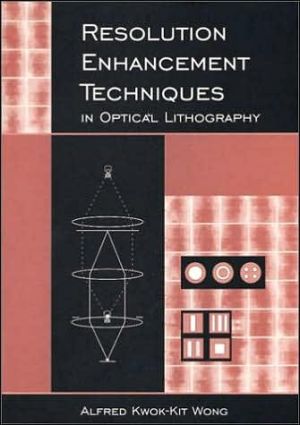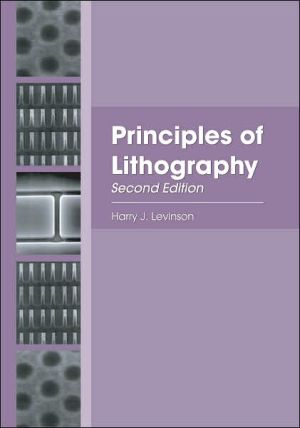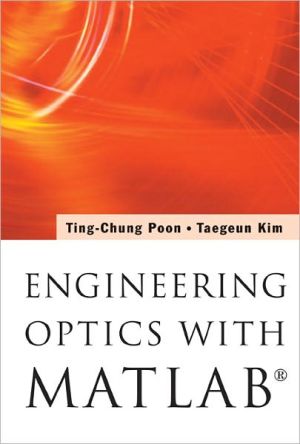Optoelectronics and Photonics: Principles and Practices
An introductory up-to-date textbook in optoelectronic and photonic devices suitable for half- or one-semester courses at the undergraduate level in electrical engineering, engineering physics and materials science and engineering departments. Although written for undergraduate students, it can also be used at the graduate level as an introductory course by incorporating some of the selected topics included on the accompanying CD-ROM. It assumes that the students have covered calculus and...
Search in google:
An introductory up-to-date textbook in optoelectronic and photonic devices suitable for half- or one-semester courses at the undergraduate level in electrical engineering, engineering physics and materials science and engineering departments. Although written for undergraduate students, it can also be used at the graduate level as an introductory course by incorporating some of the selected topics included on the accompanying CD-ROM. It assumes that the students have covered calculus and complex numbers and would have taken a basic course in semiconductors, that is, are familiar with basic energy-band diagrams. The principles are developed with a minimum of mathematics and with the emphasis on physical concepts. There are numerous solved problems and worked examples to relate the concepts to practical devices. CD-ROM: Optoelectronics and Photonics CONTENTS PROFESSIONAL COLOR OVERHEAD TRANSPARENCY DIAGRAMS Color diagrams of all figures in the textbook are accessible as PDF, Word, and Power Point files. Print on any suitable color printer. SELECTED TOPICS IN OPTOELECTRONICS AND PHOTONICS Color reprints of educational articles from Physics Today, Physics World, IEEE Spectrum, American Journal of Physics, Laser Focus World, Photonics, IEE Review, IEE Engineering Science and Education Journal, and various educational review articles from international optoelectronics instructors and specialists covering topics in (PDF files). Diffraction, Who Were Fabry and Perot? Fabry-Perot Optical Resonators, Advances in Optical Communications, Slitons, Chaos in Optoelectronics, 100-GHz Light Switches, Quantum Cascade Lasers, Laser Applications, pn JunctionScience, Flat-Panel Displays, Laser Structures, Blue Lasers, Nonlinear Optics, Optical Fiber Amplifiers, Essentials of Photoconductivity, Steady-State Photoconductivity, Transient Photoconductivity, X-Ray Photoconductors, Flat-Panel X-Ray Image Detectors, Photodetectors in Optical Communications, Avalanche Photodiodes, Photodiode Arrays, Indoor Optical Communications, III-V Semiconductors, Photovoltaics, Noise in Electronic Devices. SOLVED PROBLEMS IN OPTOELECTRONICS AND PHOTONICS A collection of solved problems in semiconductor science, optoelectronics and photonics (PDF files).
Preface\ This textbook represents a first course in optoelectronic materials and devices suitable for a half- or one-semester semester course at the undergraduate level in electrical engineering, engineering physics, and materials science and engineering departments. It can also be used at the graduate level as an introductory course by including some of the selected topics in the CD-ROM. Normally, the students would not have covered Maxwell's equations. Although Maxwell's equations are mentioned in the text to alert the students they are not used in developing the principles. It is assumed that the students would have taken a basic first- or second-year physics course, with modern physics, and would have seen rudimentary concepts in geometrical optics, interference, and diffraction, but not Fresnel's equations and concepts, such as group velocity and group index. Typically, an optoelectronics course would either be given after a semiconductor devices course or concurrently. Students would have been exposed to elementary quantum mechanical concepts, perhaps in conjunction with a basic semiconductor science course.\ I tried to keep the general treatment and various proofs at a semiquantitative level without going into detailed physics. Most topics are initially introduced through intuitive explanations to allow the concept to be grasped first before any mathematical development. The mathematical level is assumed to include vectors, complex numbers, and partial differentiation, but excludes Fourier transforms. On the one hand, we are required to cover as much as possible and, on the other hand, professional engineering accreditation requires students to solve numericalproblems and carry out "design calculations." In preparing the text, I tried to satisfy engineering degree accreditation requirements in as much breadth as possible. Obviously one cannot solve numerical problems, carry out design calculations, and derive each equation at the same time without expanding the size of the text to an unacceptable level. I have missed many topics but I have also covered many; though, undoubtedly, my own biased selection.\ The book has a CD-ROM that contains the figures as large color diagrams in a common portable document format (PDF). They can be printed on nearly any color printer to make overhead projector transparencies for the instructor and class-ready notes for the students so they do not have to draw the diagrams during the lectures. The diagrams have been also put into PowerPoint for directly delivering the lecture material from a computer. In addition, there are numerous selected topics and other educational features on the CD-ROM that follows a web-format. Both instructors and students will find the selected topics very useful. These selected topics have been prepared by various authors and specialists in optoelectronics as stand-alone chapters, and they cover a wide range of topics. Although some of these topics are treated at the graduate level and review a particular area, there are also numerous selected topics at the elementary level for undergraduate students. In addition, some of these topics appear as color reprints of interesting articles taken, with permission, from various educational journals such as Physics Today, Physics World, IEEE Spectrum, American Journal of Physics, Laser Focus, Photonics, and various other magazines and journals.\ A number of colleagues took time to read portions of the manuscripts and provided many useful suggestions that made this a better book. My special thanks go to Professor Charbel Tannous (Brest University, France) and Dr. Yann Boucher (RESO Laboratory, Ecole Nationale d'Ingenieurs de Brest, France), both of whom kept challenging me with their incisive criticisms and dedication to accuracy. It's a pleasure to thank Professors Dave Dodds (University of Saskatchewan), Jai Singh (Northern Territory University, Australia), Harry Ruda (University of Toronto), Fary Ghassemlooy (Sheffield-Hallam University), John McClure (University of Texas, El Paso), Rajendra Singh (Clemson University), Drs. Costas Saravanos (Siecor, Texas), Ray DeCorby, Chris Haugen (both at TRLabs, Edmonton), Don Scansen (Semiconductor Insights, Ottawa), Brad Polischuk (Anrad, Montreal), and Daniel DeForest for their valuable comments. I also would like to thank the reviewers who were commissioned by Addison-Wesley and Prentice-Hall for their helpful suggestions. And, not least, my wife Nicolette, who was always cheerfully ready whenever I needed her help.\ No textbook is perfect and I can only improve the text with your input. Please feel free to write to me with your comments. Although I may not be able to reply to each individual comment and suggestion, I do read all my email messages and take note of suggestions and comments.\ S.O. Kasap\ Kasap@Engr.Usask.Ca\ http://Optoelectronics.Usask.Ca\ http://ElectronicMaterials.Usask.Ca
(NOTE: Each chapter concludes with Questions and Problems.) 1. Wave Nature of Light. Light Waves in a Homogeneous Medium. Refractive Index. Group Velocity and Group Index. Magnetic Field, Irradiance and Poynting Vector. Snell's Law and Total Internal Reflection (TIR). Fresnel's Equations. Multiple Interference and Optical Resonators. Goos-Hänchen and Optical Tunneling. Temporal and Spatial Coherence. Diffraction Principles. 2. Dielectric Waveguides and Optical Fibers. Symmetric Planar Dielectric Slab Waveguide. Modal and Waveguide Dispersion in the Planar Waveguide. Step Index Fiber. Numerical Aperture. Dispersion in Single Mode Fibers. Bit-Rate, Dispersion, Electrical and Optical Bandwidth. The Graded Index Optical Fiber. Light Absorption and Scattering. Attenuation in Optical Fibers. Fiber Manufacture. 3. Semiconductor Science and Light Emitting Diodes. Semiconductor Concepts and Energy Bands. Direct and Indirect Bandgap Semiconductors: E-k Diagrams. pn Junction Principles. The pn Junction Band Diagram. Light Emitting Diodes. LED Materials. Heterojunction High Intensity LEDs. LED Characteristics. LEDs for Optical Fiber Communications. 4. Stimulated Emission Devices Lasers. Stimulated Emission and Photon Amplification. Stimulated Emission Rate and Einstein Coefficients. Optical Fiber Amplifiers. Gas Laser: The He-Ne Laser. The Output Spectrum of a Gas Laser. LASER Oscillation Conditions. Principle of the Laser Diode. Heterostructure Laser Diodes. Elementary Laser Diode Characteristics. Steady State Semiconductor Rate Equation. Light Emitters for Optical Fiber Communications. Single FrequencySolid State Lasers. Quantum Well Devices. Vertical Cavity Surface Emitting Lasers (VCSELs). Optical Laser Amplifiers. Holography. 5. Photodetectors. Principle of the pn Junction Photodiode. Ramo's Theorem and External Photocurrent. Absorption Coefficient and Photodiode Materials. Quantum Efficiency and Responsivity. The pin Photodiode. Avalanche Photodiode. Heterojunction Photodiodes. Phototransistors. Photoconductive Detectors and Photoconductive Gain. Noise in Photodetectors. 6. Photovoltaic Devices. Solar Energy Spectrum. Photovoltaic Device Principles. pn Junction Photovoltaic I-V Characteristics. Series Resistance and Equivalent Circuit. Temperature Effects. Solar Cells Materials, Devices and Efficiencies. 7. Polarization and Modulation of Light. Polarization. Light Propagation in an Anisotropic Medium: Birefringence. Birefringent Optical Devices. Optical Activity and Circular Birefringence. Electro-Optic Effects. Integrated Optical Modulators. Acousto-Optic Modulator. Magneto-Optic Effects. Non-Linear Optics and Second Harmonic Generation. Notation and Abbreviations. Index. CD-ROM: Optoelectronics and Photonics Contents.
